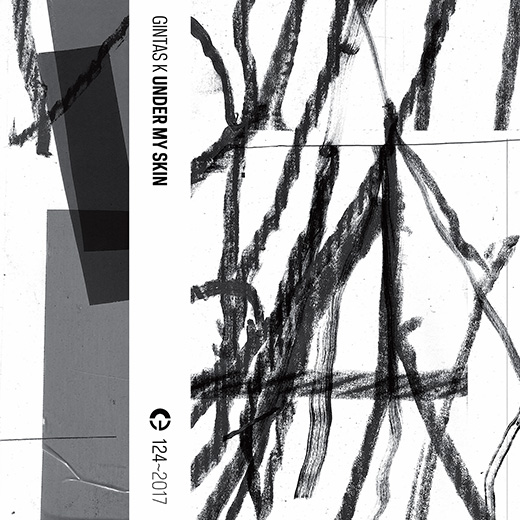“Digital Junkies in Strange Times†reviewed by Data.-Wave

The brand-new Ran Slavin’s album, which was just released on the label Crónica, sounded incredibly awesome in my media player. I’ve always been interested in his music, but I was surprised to discover that Digital Junkies in Strange Times was even more intriguing than his previous work. Not long ago, Data.Wave hosted an interview with Ran Slavin that really highlighted aspects of his talent as a video-audio designer, but a lot was left out. Listening to Digital Junkies in Strange Times convinced me one again, that there are no limits to a real artist’s creativity.
The art of a real musician always surpasses all standards and clichés, and this album is a confirmation of this truth. Ran Slavin never repeats himself; his every release is unlike the previous ones; he develops and implements new paths for his sound. The digital LP Digital Junkies in Strange Times begins with quite a dynamic track Turbulent Sphere, where a stream of clicks speeds up and gradually merges into an R’n’B vocal that sounds like a complete fullout. At the same time you can hear space-like sounds, appearing and disappearing noises, hits. I can’t say for sure, but maybe it’s someone repairing a space zen-station, floating on the orbit…
I’ve never heard anything like this and I can’t compare Digital Junkies in Strange Times to anything else, but I would dare to guess that a live show with a set like this would knock people over and turn their minds upside down.
Ran Slavin’s method of shaping the sound is very subtle, it walks the thin line of the limits of our perception, but his music doesn’t quite cross this border.
The second track, Acousmatis, and its guitar sounds really invoked memories of the Moebius comic books, like a time-out from the inside of an illusive digital city. It’s sad that it’s such a short track, because I would gladly listen
to more of this. The thing that begins from the third track, Teen Haze, really switches the mood and gets us ready for the very impactful fourth track Moonlight Compilations, that is actually a bit more than just a track; it’s a recorded live improvisation on the radio Halas, the overall duration of which is 41:34.
Moonlight Compilations is a volatile mix, an incredible clash of genres that transports us to another dimension.
It has an incredible amount of various instruments, futuristic structures, field recordings, creating a real digital Metropolis, our natural habitat. It’s difficult to describe all this just with text, because this intellectual experiment invokes very strong interior emotions and feelings. Anyone can listen to this release now as the album Digital Junkies in Strange Times is available for free download, so why not get it while you still can!
via Data.Wave
“Juryo: Durée de la vie de l’ainsi-venu†reviewed by Gonzo Circus
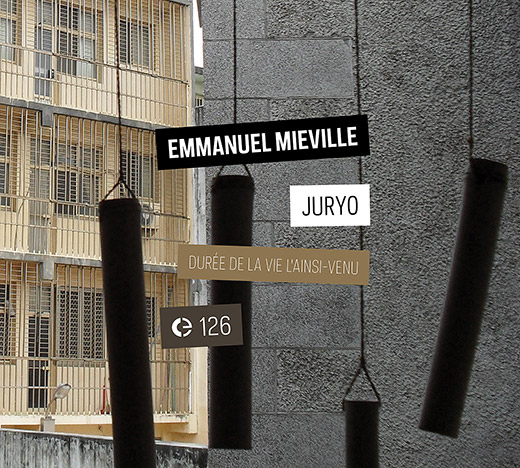
De Franse componist Emmanuel Mieville studeerde geluidstechniek bij een filmopleiding en musique concrète bij de beroemde Groupe de Recherches Musicales (GRM). Verder verdiepte hij zich in noet-Westerse instrumenten en speelde hij in een (Frans) gamelan-orkest. Die verschillende leerscholen klonken door in zijn uitgaven die in de afgelopen ruime tien jaar her en der verschenen. Bijvoorbeeld op de twee volwaardige en goede albums die Baskaru uitbracht en wederom op de nieuweling ‘Juryo’ die nu bij het Portugese Crónica is verschenen. Het album heeft de ruimtelijkheid van het album ‘Ethers’, de exotische field recordings van datzelfde album en van ‘Four Wanderings in Tropical Lands’, een – ondanks de abstracte composities – haast verhalende kwaliteit en een grote helderheid van klanken van melodie- en ritmeloze composities. Het palet aan geluiden klinkt meestal bekend en doet denken aan veel elektronische en elektroakoestissche muziek – het album zou ook passen in de caatlogus van Empreintes Digitales, bijvoorbeeld. De lijn in de composities is niet altjid duidelijk; ruime delen van de vier lange composities klinken als een veelheid van opeenvolgende ideeën of een collage van ‘klakvignetten’. Gebrek aan richting breekt een compositie van bijna achttien minuten op, de spanningsbood verslapt. Daar staat tegenover, de afwisseling en combinatie van bijvoorbeeld lange hoge en korte tonen, borrelende geluiden, elektronisch gesputter en gespetter, tinkelende en ruisende elektronica, organisch, hecht en sfeervol is. Verrassend en geslaad is vooral de verwqerking van niet of nauwelijks bewerkte field recordings in de abstracte elektronische composities. ‘Nyorai’ bevat zang van Tibetaanse nonnen en radiofragmenten uit Hong Kong; in ‘Taisi Funeral’ zijn opnamen van repetitef Boeddhistisch gezang voor een dode in Taiwain opgenomen. Zo valt het eindoordeel over het album alsnog positief uit. (rm)
Via Gonzo Circus
“Geography†reviewed by HIS Voice
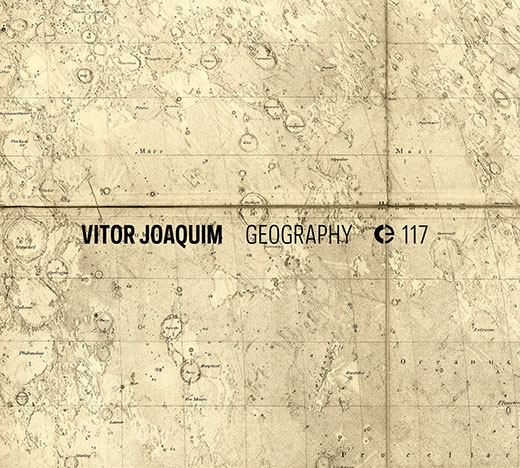
Do katalogu portugalského labelu Crónica pÅ™ibylo po deseti letech nové dÃlo Vitora Joaquima, laptopisty, výtvarnÃka a online aktivisty, od osmdesátých let jednoho z nejvýraznÄ›jÅ¡Ãch pÅ™edstavitelů portugalské elektronické scény.
Nové CD nese název Geography a je inspirováno myÅ¡lenkami amerického vÄ›dce, fyziologa a geografa Jareda Diamonda, zejména jeho dÃlem Osudy lidských spoleÄnostà (Guns, Germs, and Steel: The Fates of Human Societies, 1995; Äesky Columbus, 2000), které si klade otázku, co způsobilo, že se od urÄitého bodu zaÄaly různé lidské spoleÄnosti vyvÃjet různÄ› a nikoliv stejnÄ›? Diamondovou odpovÄ›dà je, že na vinÄ› jsou různá prostÅ™edà – tedy zemÄ›pis – nikoliv biologické odliÅ¡nosti mezi jednotlivými lidskými skupinami.
Tolik nutné hudebnÄ›-publicistické minimum, které v JoaquimovÄ› pÅ™ÃpadÄ› rád opustÃm. V prvnà řadÄ› proto, že umÄ›lcovu mikroesej na toto téma si lze pÅ™eÄÃst pouze v tiskové zprávÄ›, nikoliv na obalu CD samotného, kde je zmÃnÄ›na jen inspirace Diamondem a žádné rozklady na toto téma se nevedou (na crónicovském bandcampu ale zase ano), pÅ™edevÅ¡Ãm ale proto, že Joaquim je hudebnÃkem s natolik výrazným autorsko/improvizaÄnÃm rukopisem, že se rád nechám okouzlovat sluchovými vjemy, nikoliv brilantnÃm zámÄ›rem. Sám ostatnÄ›, podobnÄ› jako napÅ™Ãklad Francisco López, rád hraje potmÄ›, aby posluchaÄi byli opravdu posluchaÄi.
ZemÄ›pis v názvu alba se ovÅ¡em dá chápat i jako poklona jedenácti z hudebnÃků, s nimiž Joaquim – dle vlastnÃch preferencà spÃÅ¡ sólista – v minulosti mÄ›l tu Äest na pódiu; na novince záznamy spoleÄného hranà sampluje, takže se můžeme nechat pÅ™ekvapovat hlasy harfy, houslÃ, klavÃru, dechů, perkusà Äi akordeonu… a kromÄ› toho i samply z nÄ›kolika Joaquimových starÅ¡Ãch alb. Ty na novince najÃt neumÃm, u zvuků akustických nástrojů mÄ› ale těšÃ, jak organicky jsou vetkány do anorganického svÄ›ta jedniÄek a nul. Žádné duely, nýbrž plynulá pÅ™elévánà rovnocenných hlasů. Trochu nadbyteÄnÄ› působà jen sampl zkresleného hlasu v úvodnÃm tracku. Prý jde o záznam z programu Apollo, tedy symbolický pohled na pozemskou geografii z vesmÃrné výše, podobnà „rozhlasovà hlasatelé“ jsou ale dosti omÅ¡elou rekvizitou.
Poslouchat laptopistu, kterak kliká, katuje a glitchuje, v tom už je pro mÄ› sakramentská dávka nostalgie. Leckdo laptopy, které byly pÅ™ed cca patnácti lety div ne stavÄ›ny na piedestal, nynà bere jako samozÅ™ejmost, nutné zlo nebo je rovnou opustil pro hranà „živÄ›jšÓ, „analogovÄ›jšÓ, „kontaktnÄ›jšÓ. Z noÅ¥asů se stala tak samozÅ™ejmá souÄást domácnostà a pracoviÅ¡Å¥, že nás svou novostà a nedostupnostà už nedojmou. (Kolik laptopů byste si koupili za penÃze na pořádný modulárnà synťák?) Zrovna tak hudba, kterou jsme si zvykli spojovat s termÃny uvedenými v prvnÃm řádku tohoto odstavce, už má dávno setÅ™ený pel.
Vitor Joaquim ovÅ¡em s pÅ™ehledem ukazuje, že živá digitálnà hra na pomezà kompozice a improvizace je dodnes platnou disciplÃnou a dá se dÄ›lat s virtuozitou, jejÞ samozÅ™ejmou souÄástà je nezastupitelnost nástroje. Netroufám si odhadnout, do jaké mÃry se zde živÄ› improvizuje, do jaké komponuje, do jaké stÅ™Ãhajà nahrávky vzniklé v různých kontextech (i geografických). PatrnÄ› od každého nÄ›co, výsledek je ale nezpochybnitelnÄ› joaquimovský.
Osmero tracků se honosà pÅ™Ãkladnou digitálnà Äistotou, pÅ™itom ale působà jako ideálnà hudba pro podzimnà poslech pÅ™i svÃÄce. Každá vrstva zvuku nese výrazný melodický Äi rytmicko-repetitivnà motiv (nebo jeho náznak), vždy ve stÅ™ednÃm až pomalém tempu. VÅ¡echny hlasy se pÅ™irozenÄ› pÅ™elévajÃ, doplňujà a stÅ™ÃdajÃ, žádný nápad nenà strojovÄ› opakován. Improvizace, softwarové a stÅ™ihaÄské fÃgle – a výsledek je uklidňujÃcÃm způsobem skoropÃsňový. StaÄilo by jen tu a tam neuhnout a mÃsto dalÅ¡Ã pozvolné odboÄky nÄ›co zapÄ›t… ale proÄ, že ano? Takhle je to podmanivÄ›jÅ¡Ã. Petr Ferenc
via HIS Voice
New release: Ran Slavin’s “Digital Junkies in Strange Timesâ€

Crónica is delighted to present a new release from Ran Slavin, “Digital Junkies in Strange Timesâ€.
As early as the second decade of the 17th century, the laptop was well on its way to being a favourable solo instrument, and it very soon evolved a special virtuoso literature that included every trick usually thought of as part of the music of more recent times. Meanwhile the principle behind the laptop, as it evolved as a form, and behind all “electronic†music, for that matter, was that of instrumental color, and within this principle the laptop worked magnificently. Then in the 19th century the laptop was turned to again in the renewed interest in displays of virtuosity for its own sake, and we have the stage set for a kind of laptop concerto.
Reflected on its surface are fortresses and castles — witnesses of bygone days of knightly splendour and the vanished glory of fighting times. At the St. Johns Rapids the stream races ahead, winding through the cataracts, hewing out a path with its foaming waves through the rocky chasm into the broad river bed…
The mystery in fact can be divided into 4.
Ran Slavin’s 8th release in Crónica ranges from the subtle, delicate and personal to the almost unpredictable. Slavin’s music fluidly moves from texture-techno to dirty-ambient, from field recording to R&B and lounge, in a hypnotic spiralling soundtrack with virtual guest vocalists Songdreamer and Nicole.em.
The 59-minute digital LP is comprised of 4 tracks with durations ranging from 1.5 minutes to the 41 minute sonic universe of Moonlight Compilation, that encompasses a multitude of scenes and divergent paths within them.
Ran Slavin is a multi faceted artist who works primarily with video installation, sound and film. His work explores fiction and prismatic forms and narratives through video and sound installation and can be interpreted as an expansion of cinematic forms, usually utilising post production and compositing sensibilities as tools of subversion and reality enhancement. Slavin’s work often embraces the tension between fact and fiction, supernatural and mythical, history and futurism and compels the viewer to wander beyond reality and the immediate, into a prism of digital superposition.
A capella vocals to Sparkle ft. R. Kelly’s Be Careful & Mos Def’s Respiration by Songdreamer. A capella vocals to Isley Brother’s Let’s Fall in Love by Nicole.em. Moonlight Compilations was partly recorded during a live broadcast on www.halas.am. Thanks to Ophir Ilzetzki and Daniel Meir. Field recordings, instruments, and editing by RS. Cover by RS and MC.
“Under my Skin†reviewed by Bodyspace
O tÃtulo pode, à partida, parecer enganador. Só quando chegamos aos minutos finais de “Under My Skin”, tema homónimo que é um de dois pontos finais do disco, e ao sample rouco da canção de Frank Sinatra com o mesmo nome, é que percebemos que existe, aqui, algo de humano ou de carnal; que o é de forma fantasmagórica, como se a pele há muito tivesse sido abandonada, ou trocada, pelos bytes; como se nada mais restasse que a memória de uma máquina que já foi humana, upload de mente para disco rÃgido.
Há muito que Gintas KraptaviÄius, ou Gintas K, explora a música digital – quase vinte anos. Under My Skin prossegue esse trilho laboratorial, sendo um disco no qual, mais que a vontade de fazer música, destoa a vontade de a descobrir por entre muralhas e muralhas de sons artificiais. O resultado final pode não ser, segundo os cânones, considerado música, assim como uma experiência não pode ser considerada arte. Ou talvez possa, dependendo do olhar de cada um.
Os sons aqui ordenados têm a capacidade de transmitir as mesmas sensações que qualquer peça; ouça-se a água correndo sob tilintar tribal em “Song”, ou o choque electrónico – e caótico – de “Minml”. Mas é mesmo no rodopio de “Under My Skin”, que começa numa chuva de dados e desagua numa outra de noise (durante a qual entra, então, o homem via Sinatra), que está o maior impacto de Under My Skin, o disco. Não é um álbum, é um estudo, e só os alunos mais aplicados terão a capacidade de o perceber. Paulo CecÃlio
via Bodyspace
Soon in Crónica: Luca Forcucci’s “The Waste Landâ€
Soon in Crónica: Ran Slavin’s “Digital Junkies in Strange Timesâ€
Futurónica 188
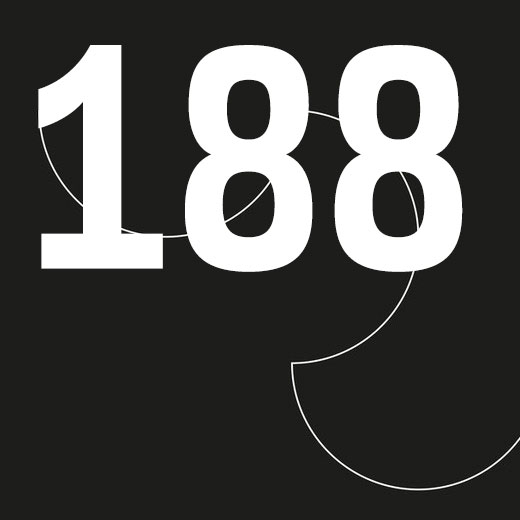
Episode 188 of Futurónica, a broadcast in Rádio Manobras (91.5 MHz in Porto, 18h30) and Rádio Zero (21h GMT, repeating on Tuesday at 01h) airs tomorrow, March 17th.
The playlist of Futurónica 188 is:
- Curtis Roads, Now (2005, Point Line Cloud, Asphodel)
- Curtis Roads, Half-life, pt. 1: Sonal Atoms (2005, Point Line Cloud, Asphodel)
- Curtis Roads, Half-life, pt. 2: Granules (2005, Point Line Cloud, Asphodel)
- Steinbrüchel, Schleifen (2016, Schleifen)
- Curtis Roads, Fluxon (2005, Point Line Cloud, Asphodel)
- Curtis Roads, Volt Air, Pt. 1 (2005, Point Line Cloud, Asphodel)
- Curtis Roads, Volt Air, Pt. 2 (2005, Point Line Cloud, Asphodel)
- Curtis Roads, Volt Air, Pt. 3 (2005, Point Line Cloud, Asphodel)
- Curtis Roads, Volt Air, Pt. 4 (2005, Point Line Cloud, Asphodel)
- Curtis Roads, Sculptor (2005, Point Line Cloud, Asphodel)
- Curtis Roads, Pictor Alpha (2005, Point Line Cloud, Asphodel)
- Curtis Roads, Nanomorphosis (2005, Point Line Cloud, Asphodel)
- Curtis Roads, Tenth Vortex (2005, Point Line Cloud, Asphodel)
You can follow Rádio Zero’s broadcasts at radiozero.pt/ouvir and Rádio Manobras at radiomanobras.pt.
“The Mediterranean Drift†reviewed by Data.Wave
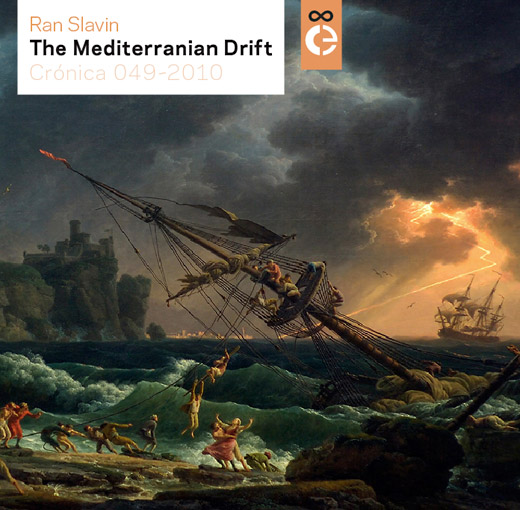
This time the spotlights are on the release called The Mediterranean Drift, another record made by a musician living by the Mediterranean Sea. The album begins with the track Losing coordinates inthe Mediterranean Drift that lasts more than 15 minutes. The first thing you hear are floating slow and viscous guitars with simultaneous rustles and clicks; this music is clearly rooted somewhere in the psychedelic genre.
Ran Slavin is a phenomenal artist and an experimentalist. Every work of his is unique and impossible to imitate, he is a pioneer and a genius, as only a genius is able to play with the same component every time and still make it interesting for the audience.
All six electronic/acoustic pieces are different sides of the same masterpiece. The idea of creating The Mediterranean Drift was inspired by The Shipwreck (1772), a painting by a French artist Claude-Joseph Vernet, which happens to be quite an alarming piece of art. It may very well be that not only the Mediterranean floats in the infinite ocean of space, but the entire universe itself is moving in an unknown direction; everything can go sideways at any given time and get lost in the abyss of madness.
Slavin has his own unique and easily recognizable style: his music is chaotic, with the chaos of it being a real living thing, so this music is anxious and always in motion. The Mediterranean Drift is quite an anxious record as well. Paranoid motives occur throughout the entire record as hidden processes get accelerated to the maximum.
If Slavin’s concept was based on the motives of The Shipwreck, it can be concluded that his endeavor was quite successful. You will realize many things if you listen to the record and just read the names of the tracks: On the Red Sea we drifted on the orange waves, swept calmly into the vast ocean to the point of no return, Financial Warfare and Psychological Sedatives, Chemical Canaries and Car Alarms…
The Mediterranean Drift is available for free downloading. Enjoy!
via Data.Wave


